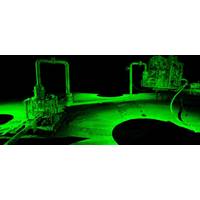
3D at Depth Gets Patent for Subsea Structure Monitoring
3D at Depth, a subsea LiDAR laser technology company said Tuesday it had received a new patent 11.249.193, "Systems and Methods for Monitoring Underwater Structures," from the U.S Patent and Trademark Office. The patent's claims focus predominantly on leak detection and identifying changes to surfaces and volumes on and around underwater assets via the company's patented active optical measurement device, the company said."3D at Depth collects and processes four-dimensional data in line with client requirements, including millimetric three-dimensional data taken over time
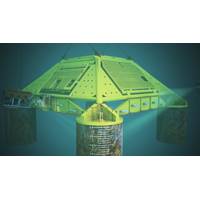
Challenges of Underwater Structure Monitoring for Offshore Operations
to a report from TechSci Research1, the value of global underwater monitoring services for the oil and gas sector is projected to grow from around $1billion in 2018 to $1.8billion by 2024.With an increasing focus on improving efficiencies throughout the global energy sector, the installation of subsea structures on the seabed can pose complex and costly challenges if handled incorrectly. It is essential that installation work is completed thoroughly and quickly, due not only to the harsh conditions which equipment can face, but also to the traditionally high financial costs of having installation vessels
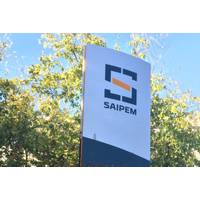
Saipem Wins BP Azerbaijan Job
of Azerbaijan, the field extends over an area of more than 4,000 square kilometers and is one of the largest of its kind in the world.Specifically, two contracts are for pipeline design, pipelay and related activities, while the third is for transportation and installation of four jacket pin piles, subsea structure and spools.Saipem’s share of the overall value of the three contracts is approximately $145 million, it said.Saipem has obtained one of these contracts as a result of the FEED phase awarded by BP to Saipem’s XSIGHT Division, in consortium with local partners Bos Shelf and Star Gulf

#Oi2020 History: Rigs to Reefs
Did you know? Offshore petroleum platforms can also act as artificial reefs, thus creating ideal marine habitats. The program, known as “Rigs to Reefs,” was established in 1979 with an Exxon experimental subsea structure, and has since formed the world’s largest artificial reef habitat complex in the world. In 1984, "Rigs to Reefs" reached federal status when the U.S. Congress signed the National Fishing Enhancement Act as a result of “increased interest and participation in fishing at offshore oil and gas platforms and widespread support for effective
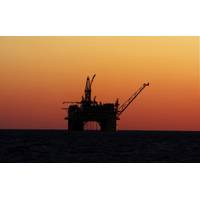
McDermott Wins Subsea Tieback Work for Stonefly
Company to install the subsea infrastructure to support a two well subsea tieback from the Stonefly development site to the Ram Powell platform approximately 140 miles southeast of New Orleans in the Gulf of Mexico.McDermott said its work scope includes project management, installation engineering, subsea structure and spoolbase stalk fabrication, and subsea installation of the subsea infrastructure to support a two well subsea tieback from the Stonefly development site to the Ram Powell platform via a 60,000 foot 6-inch pipeline at water depths ranging from 3,300 to 4,100 feet. McDermott said it will

Ashtead Delivers Installation Monitoring Services to Subsea 7
, ensuring maximum performance of the system.This approach to subsea system installation was developed by Ashtead to minimize potential risks and reduce costs in subsea operations.Ross Macleod, technical director at Ashtead Technology, explained, “Precision is key in the installation of any subsea structure to ensure it operates to its full potential. However, operating in such a harsh environment can make data gathering challenging and time consuming.“Our advanced Deflection Monitoring System has been designed to provide precise data whilst reducing technological and operational risk. The

Interview: Antony Croston, Trelleborg Offshore
adjustable buoyancy is a patented technology whereby the amount of uplift acting within a structure can be increased or decreased during service. Its primary application is within the ‘subsea shuttle’, a developmental concept that is intended to provide a cost-effective way of subsea structure installation or chemical injection. For the installation version of this concept, payloads are ‘shuttled’ from the surface to the seabed via a submersible barge, controlled via wire rope deployed to two service vessels. Once in position, the buoyancy can be removed from the barge
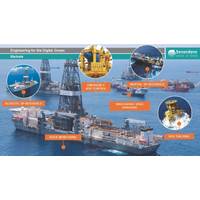
Digital Ocean: Making Subsea Data More Easily Accessible
using trilateration. Compatt 6 can also be used in vessel dynamic positioning (DP) applications using an Ultra-Short BaseLine (USBL) transceiver deployed from a vessel, the acoustic ranges measured from seabed references being used to aid the vessel/oil rig hold station above an oil well or subsea structure. Finally, as a mobile transponder, Compatt T6 can be attached to a vehicle or structure to acoustically interrogate a network of LBL Compatt 6s in order to calculate its position, or it can be tracked from the surface using USBL. PIES – The Pressure Inverted Echo Sounder (PIES)

Bibby Offshore Completes Maersk Oil UK Contract
Subsea services provider Bibby Offshore said it has completed a multimillion dollar contract with Maersk Oil UK, providing subsea structure and pipeline inspection support in the UKCS. The four-week campaign, completed in October this year, saw Bibby Offshore’s subsea support and construction vessel Olympic Bibby operate across Maersk Oil’s Gryphon and Dumbarton fields. The work scope was also supported by Bibby Offshore’s project management team based in Westhill, Aberdeen.



 February 2024
February 2024





